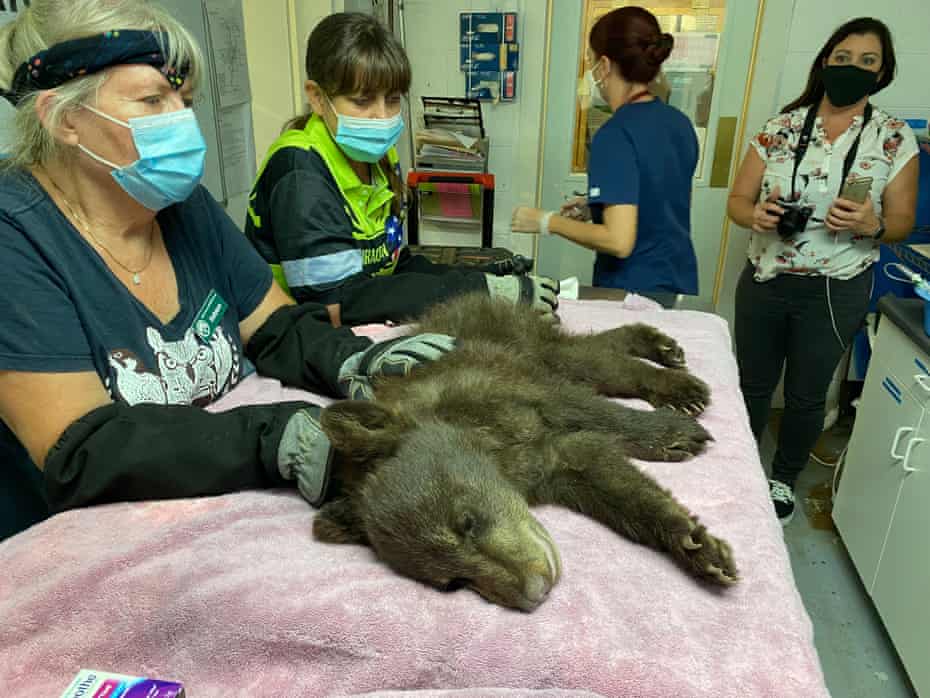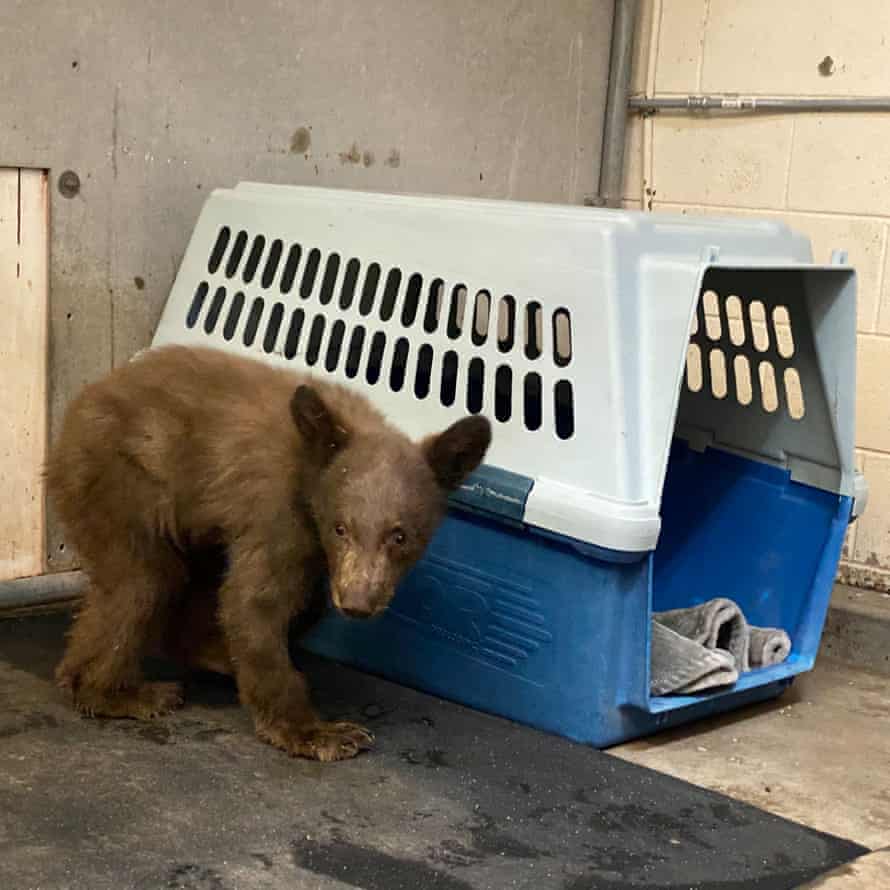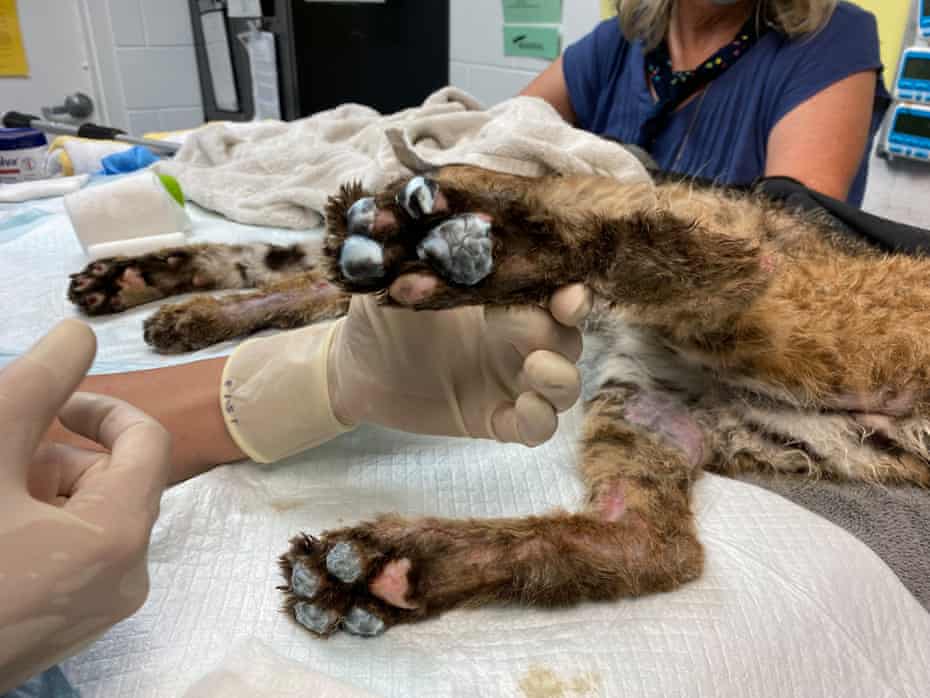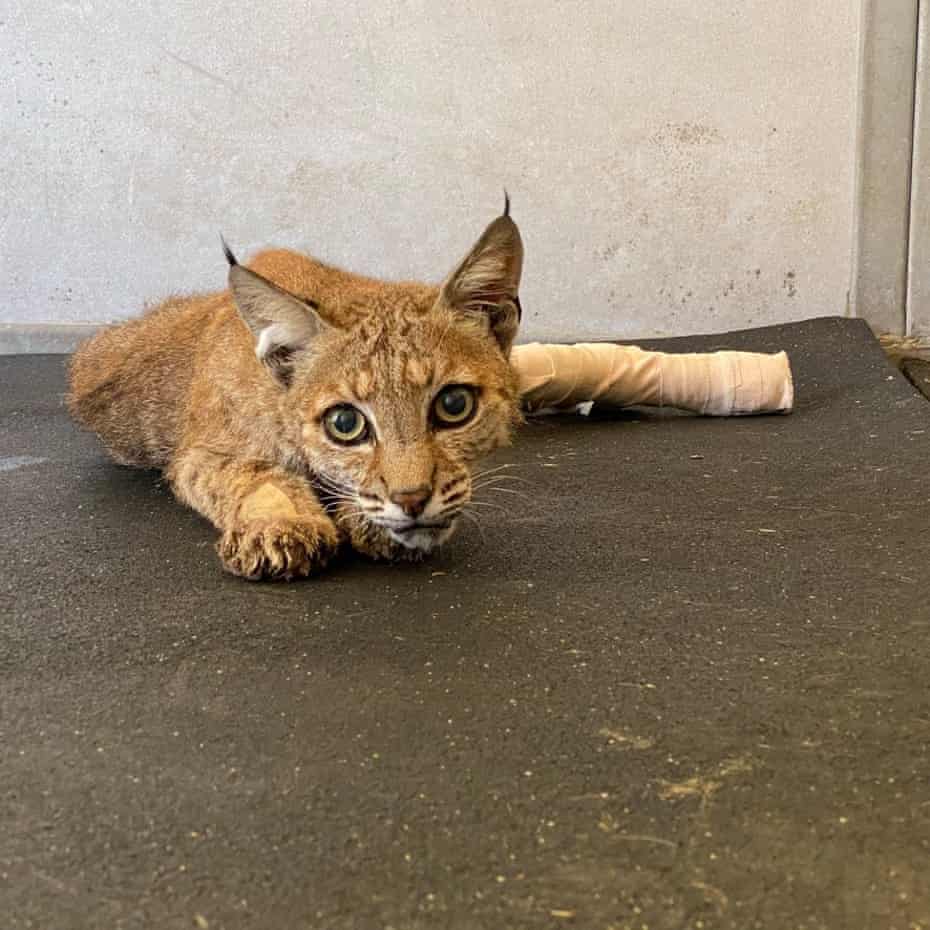Burned paws, hungry bears: the race to help animals injured in wildfires

The Wildlife Disaster Network is just one group that patrols burn areas looking for critters that need their help
Last modified on Sun 22 Aug 2021 06.02 EDT
The emaciated bear cub was trekking along a mountain road through the scorched Sierra Nevada when firefighters spotted it. His paws appeared burned and he seemed alone. There was little the fire crew could do, but call the Wildlife Disaster Network.
The group of volunteer disaster veterinarians treats animals injured in California’s devastating wildfires. The network, and other groups like it, are busier than ever this year as fires tear through the state at an astonishing pace.
“The cub was underweight and looked malnourished. He had evidence of burn wounds on all four paws. We put out a trap and he came right down,” said Dr Eric Johnson, a vet with the Wildlife Disaster Network who responded to the call from the fire crew. “We washed and cleansed his burns and determined he had a good chance for survival with rehabilitation and medical care.”

The network is a partnership between the UC Davis veterinary school and the California department of fish and wildlife. It usually gets calls from first responders located in fire zones, and then requests authorization from officials to go in to look for injured wildlife. Once captured, the animals are transported to animal rescue facilities where they sometimes spend months receiving treatments and recovering from their injuries.
Simply locating the animals, though, is often a grueling, time-consuming task.
“Some of these days involve hiking 10 to 15 hours through waist-deep ash into the red zone,” Johnson said. “Sometimes we can spend a whole day looking for an animal and not find them.”
Volunteers with the group spent about 12 hours working the nearly 65,000 acre (26,000 hectare) Antelope fire in Siskiyou county, where they took count of dead and injured animals and looked for wildlife they could help.

A few days later Johnson and others with the Wildlife Disaster Network went to find the bear cub, who was injured in the 700,000 acre (283,000 hectare) Dixie fire. Using binoculars, they spotted him up in a tree about a half mile from where firefighters had initially seen him near Taylorsville.
“It’s a tremendous relief for us when we actually find the animals,” Johnson said. “The community and the first responders – they really latch on to these animals. The wildlife is part of the community.”
California’s already seen 6,600 fires this year that collectively have burned nearly 1.5m acres (607,000 hectares), destroyed 1,852 structures and injured an untold number of animals.
Gold Country Wildlife Rescue, a nonprofit that rehabilitates and releases wounded wildlife is treating multiple animals rescued from wildfire zones along with the birds, squirrels and foxes in its care that weren’t injured in fires. It is caring for two bear cubs, including the orphan from the Dixie fire, and a bobcat injured in the Lava fire.

Typically, the rescue sees more wildfire injuries in the fall, but this summer has been extraordinarily busy, said Sallysue Stein, the group’s founder and executive director. “Sometimes they’re so critical you have to give them a few days with fluids and antibiotics,” Stein said. “We give them a few days to see if they can rebound and regenerate.”
Rescued animals receive treatments such as pulsed electromagnetic field and cold laser therapies, acupuncture, a specially formulated burn cream and tilapia skin bandages, which Stein said have helped some severely injured animals recover enough to be released back into the wild.
During the 2018 Camp fire, the rescue took in a bobcat with fifth-degree burns to its paws that seemed unsurvivable, Stein said, but with care from Dr Jamie Peyton with the Wildlife Disaster Network and the use of tilapia skin bandages, the animal made a full recovery.
“The first time we saw him was on a Friday and we put the fish skin on and by Monday … you could not see any bone. There was tissue all over the wounds,” Stein said. “It was unbelievable.”

There are thousands of injured animals who need help, Stein said. It’s difficult to see the animals in pain, she added, but the rescue and vets are rewarded by seeing them recover and return to the wild.
“We put our sadness aside and focus on what we can do to help that animal. It’s a challenge,” she said. “Bobcats are very active animals that want to rip your face off. While we’re working on them they’re sedated. It’s a privilege to be up close to the animals. The time and the care put into these animals to get them back into the wild is amazing to see.”
The orphaned bear cub from the Dixie fire that was admitted to Gold Country Wildlife Rescue is receiving IV fluids and veterinarians are treating its second and third degree burns with medical grade manuka honey. They’re optimistic about his recovery. He hasn’t had much of an appetite, the rescue says, but enjoys cantaloupe.